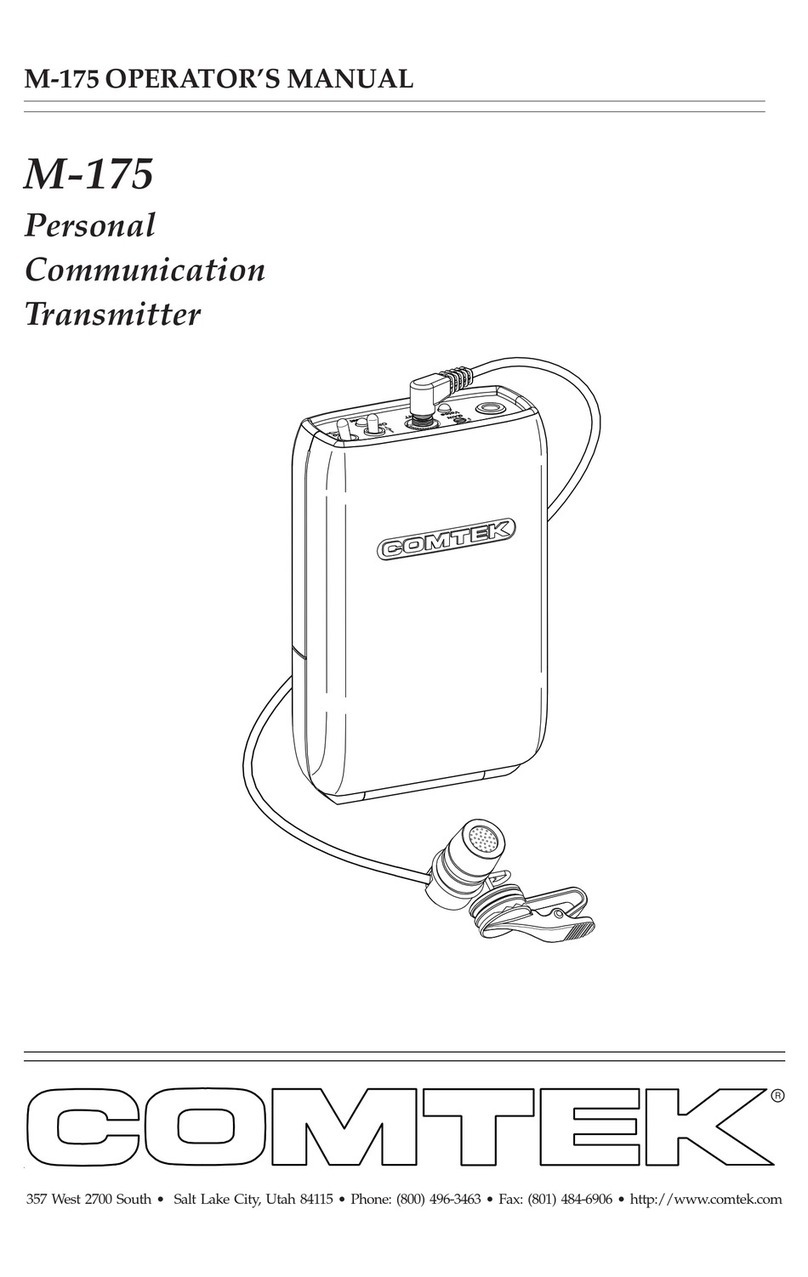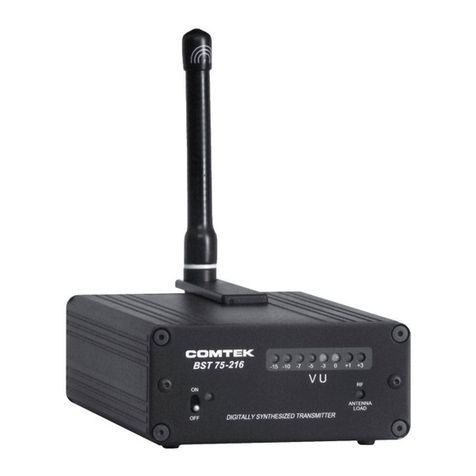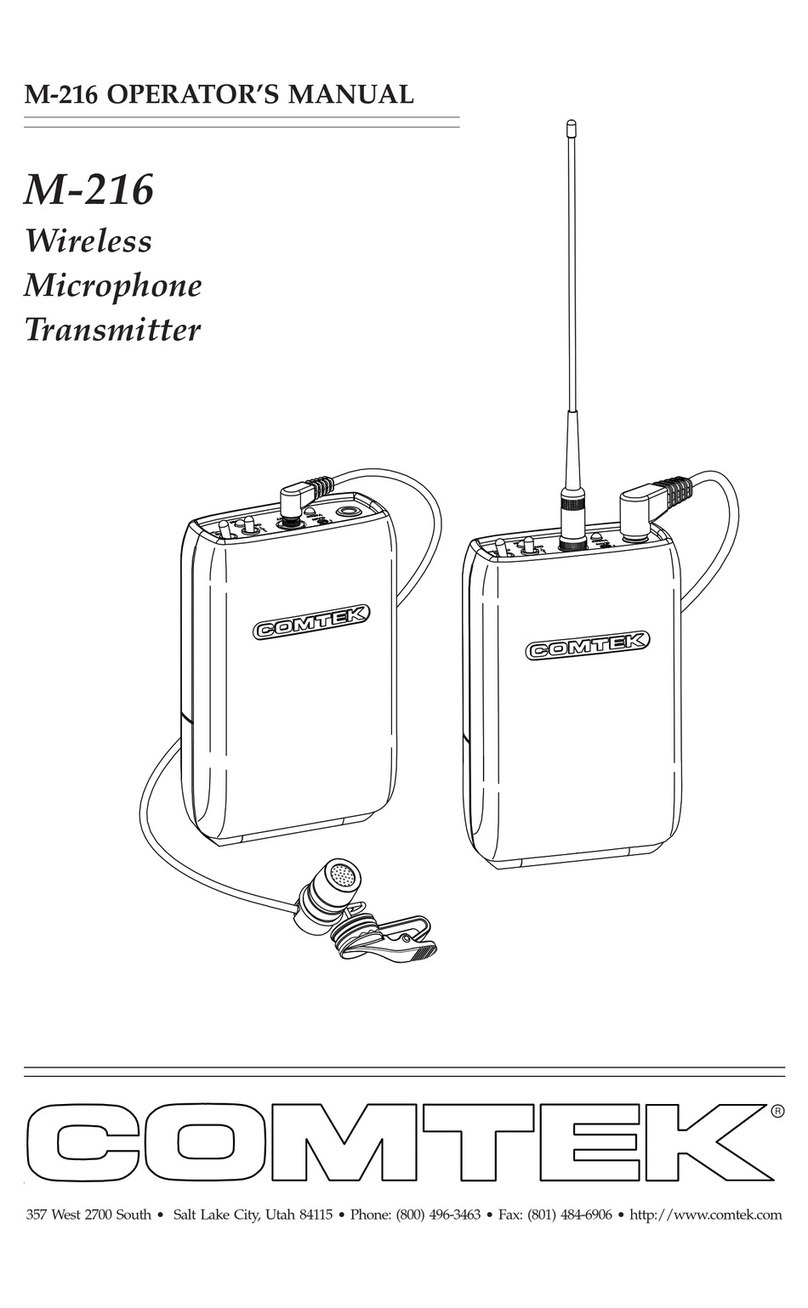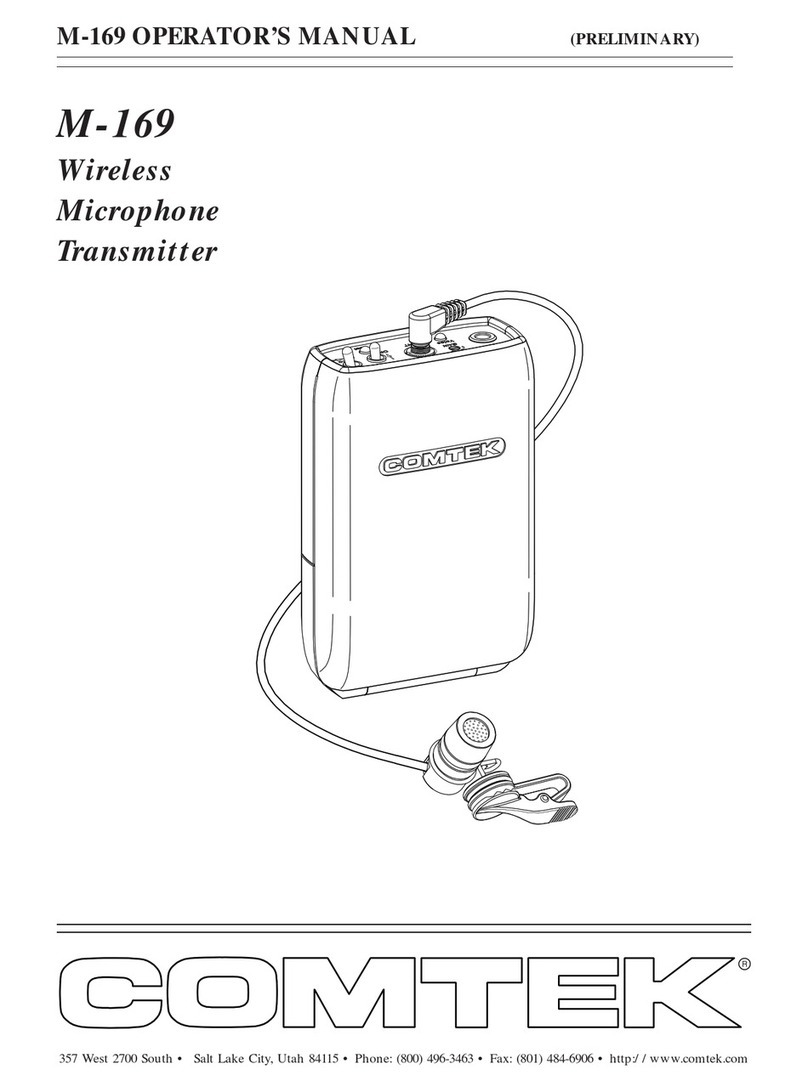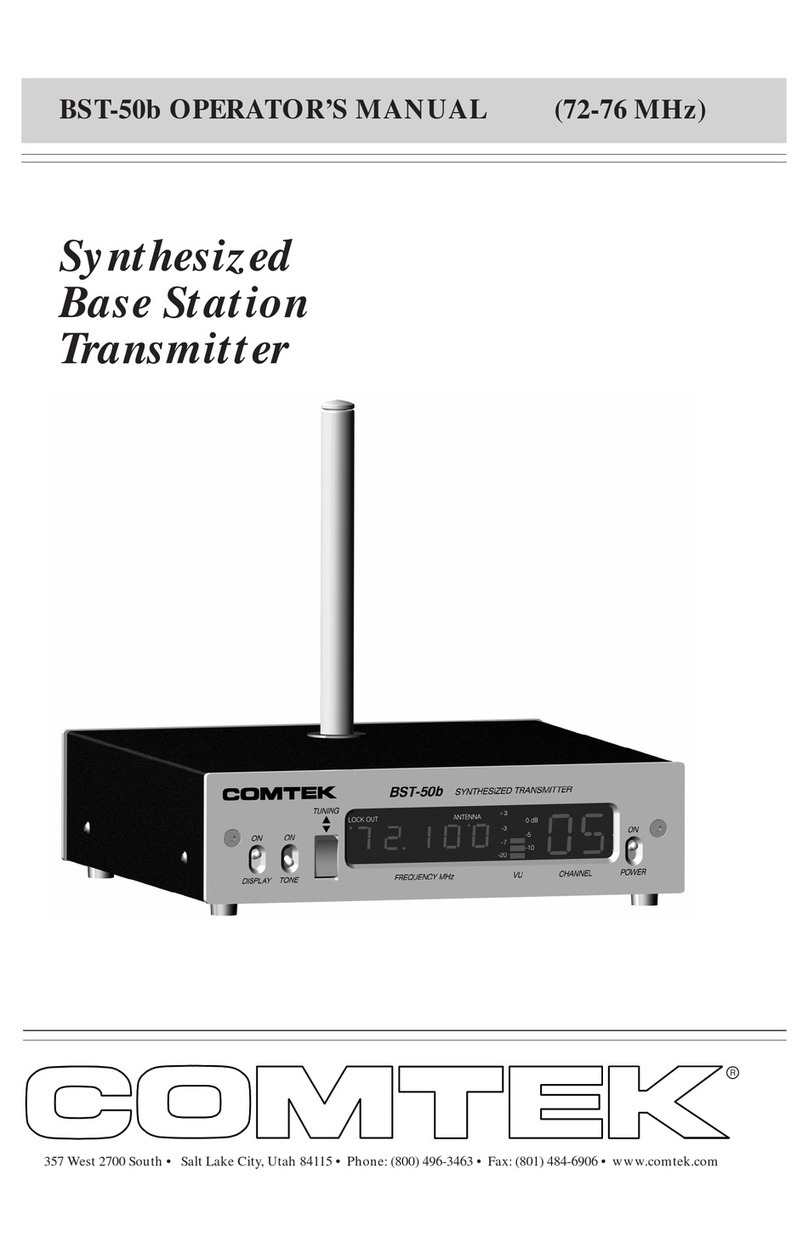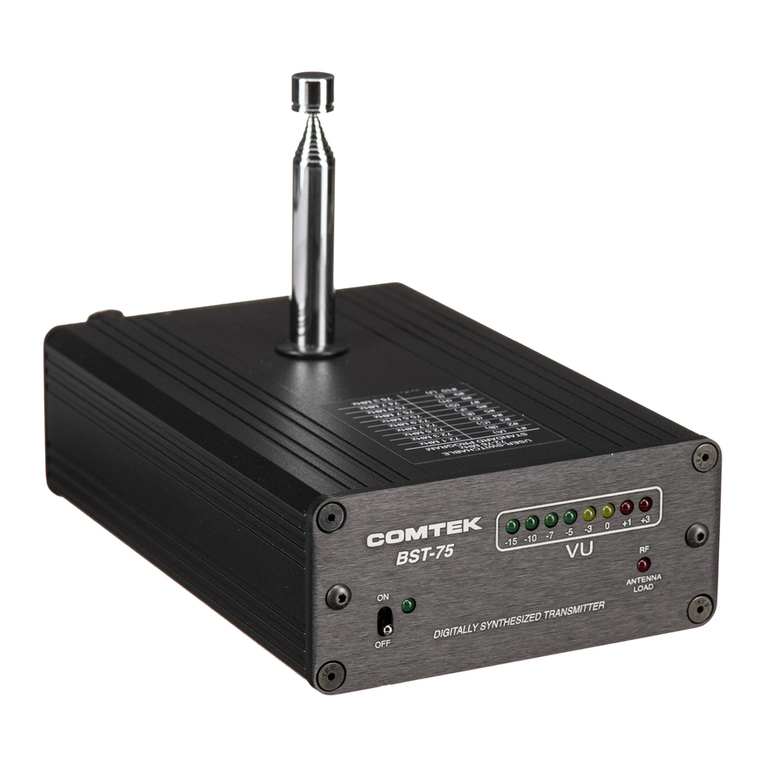Equipment Placement
If the BST-25 base station is to be rack-mounted, a remote
antenna must be used. The base station should be mounted
away from equipment that uses large power transformers to
reduce 60 Hz hum possibilities.
If the base station is to be used outside of a traditional rack-
mounted environment, the screw-in whip antenna
should be free of any metallic objects when fully extended
(12 1/2 inches).
Special Note: When using the base station in close proximity
to other audio equipment,ensure that the audio equipment is
not susceptible to RF interference. This can be accomplished
by temporarily installing the base station as per above, and
then while the base station is operating, checking all audio
outputs for uncharacteristic noise. If a problem is found,
move the base station or the remote antenna as far as possible
from the affected equipment. Should you continue to have
problems, contact COMTEK’s application engineering
department for assistance.
Remote Antenna
When the base station is rack-mounted or when greater
system range is required, a remote antenna should be used.
For vehicle installation, a 1/4 wave roof-mount (MO-1/4 wave
or MAG-1/4 wave) should be used. For field or studio
applications, the COMTEK “Phase Right Antenna”
(PRA-H 216 MHz) is an easy-to-use, high performance, omni
antenna. For high gain directional yagi type antennas and
custom antennas, contact COMTEK’s application
engineering department for assistance.
Please note: Do not install screw-in whip antenna if remote
antenna is used.
OPERATING INSTRUCTIONS
Page 2






